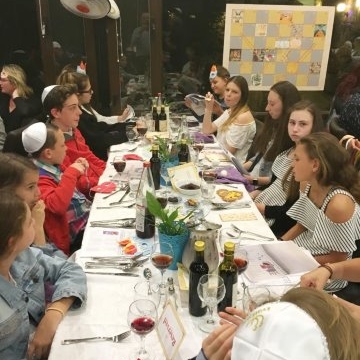
Religion

How many plagues?
KIM NOVICK
In search of inspiration, I page through a beautiful illustrated book titled The New Australian Haggadah, given to my son a couple of years ago on his barmitzvah. It bodes well that one of the dedications is from an Aboriginal elder, welcoming the Jews to their land and acknowledging similarities with regard to our respective fights for our culture and freedom.
I like the concept of retaining one’s culture and freedom. They are beautifully universal tenets and serve as the first step to moving my mind beyond an evening of simply trying to avoid eating too much matzos.
I turn to a page describing the Pesach table. There it is: the dreaded charoset. I hate the stuff. It’s clearly an acquired taste that I have never acquired. It tastes a bit like coriander, which to me is like eating old soap. However, upon further reading, it turns out that in Morocco, charoset is made of soft dates combined with walnuts, raisins and almonds that are rolled into small balls and coated in cinnamon. That sounds more like it. I will be demanding charoset duty for this Seder. Or moving to Morocco.
Still not entirely convinced I’ll last the distance, I page through the Haggadah, reading about our martyrdom as slaves. This always bothers me a little because it sounds as if we feel very sorry for ourselves. The majority of the world was at some time or other someone else’s slave. Let’s remember what our forefathers had to endure, but not feel forever like victims because of it.
Ah, the plagues. Here we are, 10 devilish-sounding afflictions sent to demoralise the host nation. In 2018, we have another plague – the cellphone. Inevitably, some wily guest has managed to sneak in the dastardly little piece of technology and somewhere between boils and locusts, the distinctive sounds of Candy Crush will erupt from under the table. If, by any chance, it happens to be my firstborn, I may indeed kill him. Same applies to my otherborns.
First cup, second cup, third cup… then Miriam’s cup. I’ve never heard of this, but I’m intrigued. Miriam’s cup is a fairly new ritual that serves as a symbol for Miriam, a source of water for the Israelites in the desert. Better yet, the books tells me, it reminds us of the role of women in Jewish history and life. Hail something that pays homage to women all over the world, who are not yet free from gender inequities. My cup runneth over.
So, I’ll stop kvetching and sit through the Seder and possibly squirrel away some charoset for those dark moments when the matzos calls my name. I’ll wait for the cos associated with Miriam and celebrate being a woman with family and friends, in a place far from my home country.
I won’t pretend I enjoy Pesach all that much, but I’m pleased I picked up this book. If anything, reading about our Exodus reminds me that the fight for those people who are still enslaved continues and we, of all people, should not be complacent. We should be at the forefront of the crusade to end it.




